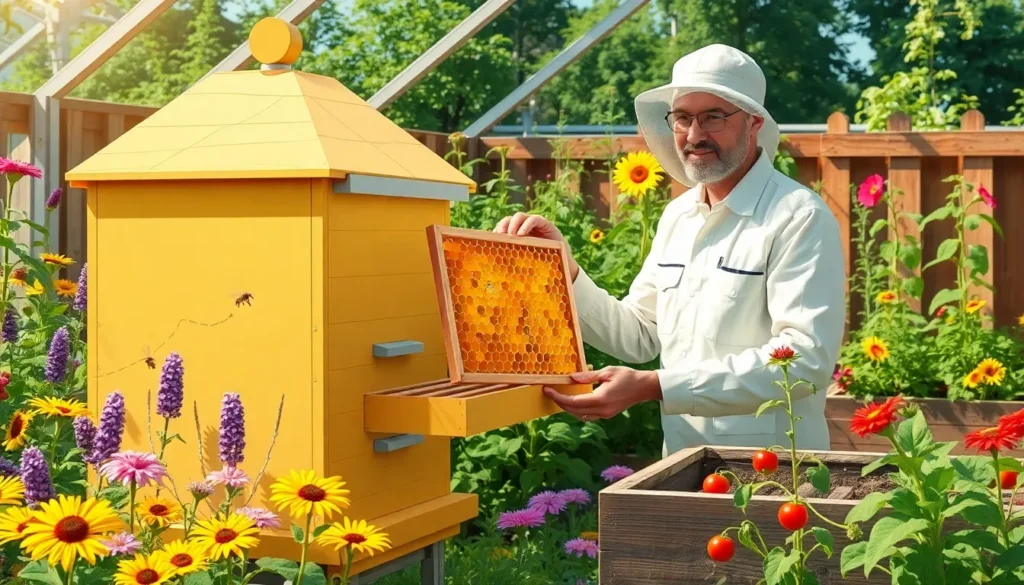Imagine stepping into your garden and being greeted by the gentle hum of bees, diligently working to pollinate your flowers and vegetables. Backyard beekeeping is not only a delightful way to enhance your garden’s productivity, but it also plays a crucial role in supporting local ecosystems and biodiversity. Whether you’re a seasoned gardener looking to expand your horizons or a curious beginner eager to dip your toes into this buzzing world, the art of beekeeping offers rewards that extend far beyond the honey jar.
The importance of bees in our gardens cannot be overstated—they are nature’s most efficient pollinators, essential for the healthy growth of countless plants. By embracing backyard beekeeping, you are actively contributing to the preservation of these vital insects, while also reaping the benefits of their tireless work. In this article, we’ll walk you through ten easy basics of beekeeping that will help you get started with confidence, covering everything from choosing the right hive to understanding bee behavior.
You’ll discover practical tips and expert advice tailored to both new and experienced gardeners, ensuring your beekeeping journey is as smooth as possible. Each step is designed to be accessible, providing you with the knowledge and tools needed to nurture your own thriving bee community. By the end of this guide, you’ll not only have a newfound appreciation for these incredible creatures but also the skills to make your backyard a haven for them. Let’s embark on this journey together, transforming your garden into a buzzing sanctuary of life and growth.
Choosing Your Beehive Style
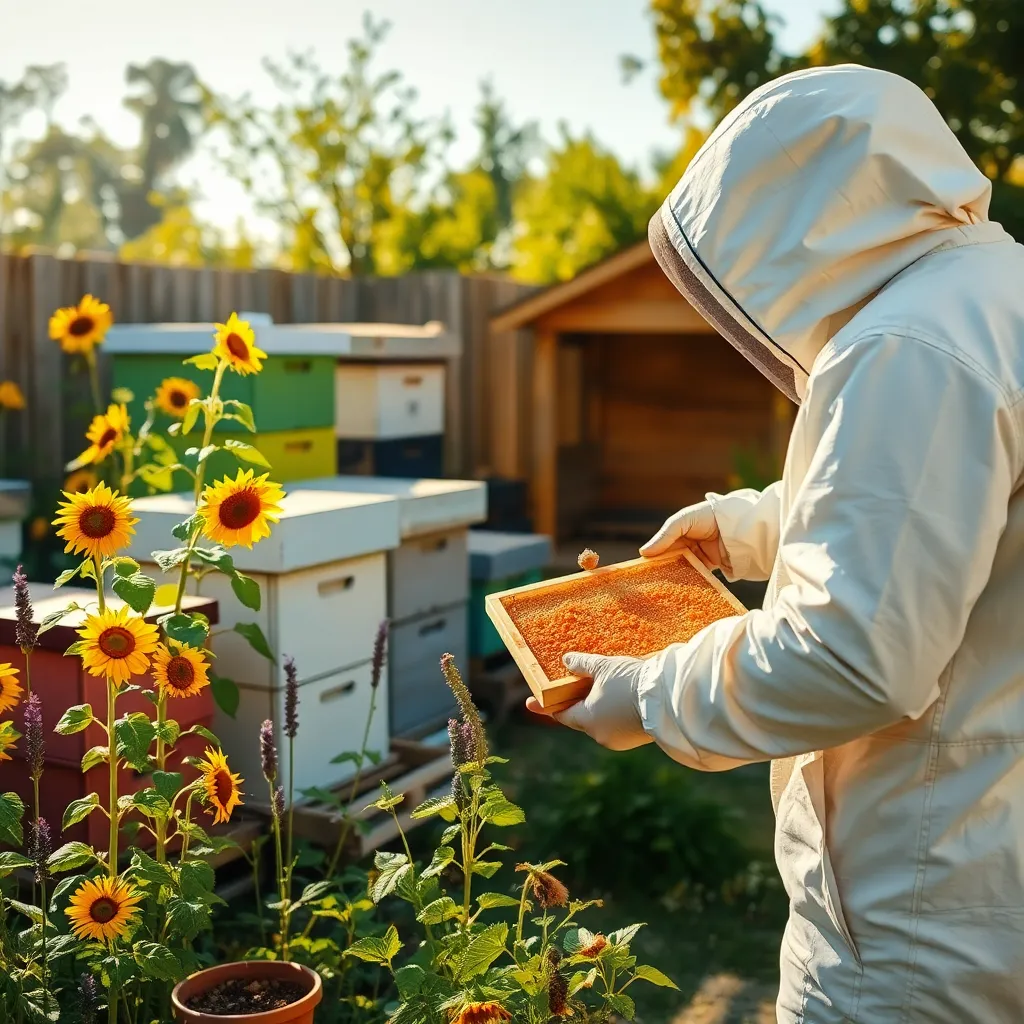
When selecting a beehive style, consider the size of your garden and your beekeeping goals. Three common types of beehives include the Langstroth, Top Bar, and Warre hives, each offering unique advantages.
The Langstroth hive is the most popular choice for beginners due to its modular design and ease of use. It consists of stacked boxes, allowing you to easily expand your hive as your bee colony grows.
If you prefer a more natural approach, the Top Bar hive may be ideal. This style allows bees to build their combs freely, mimicking their natural habitat and making it easier to manage without heavy lifting.
The Warre hive is another excellent option, especially for those interested in minimal intervention. Designed to mimic a hollow tree, it requires less frequent inspections and allows bees to manage their environment more independently.
Once you’ve chosen a hive style, ensure it’s placed on a level surface in a location with good drainage. Position your hive facing south or southeast to maximize sun exposure, which helps bees stay active and productive.
Regular maintenance is key, regardless of the hive style you choose. Inspect your hive every week or two during the active season to monitor bee health, manage pests, and ensure there’s enough space for honey production.
Selecting the Perfect Location
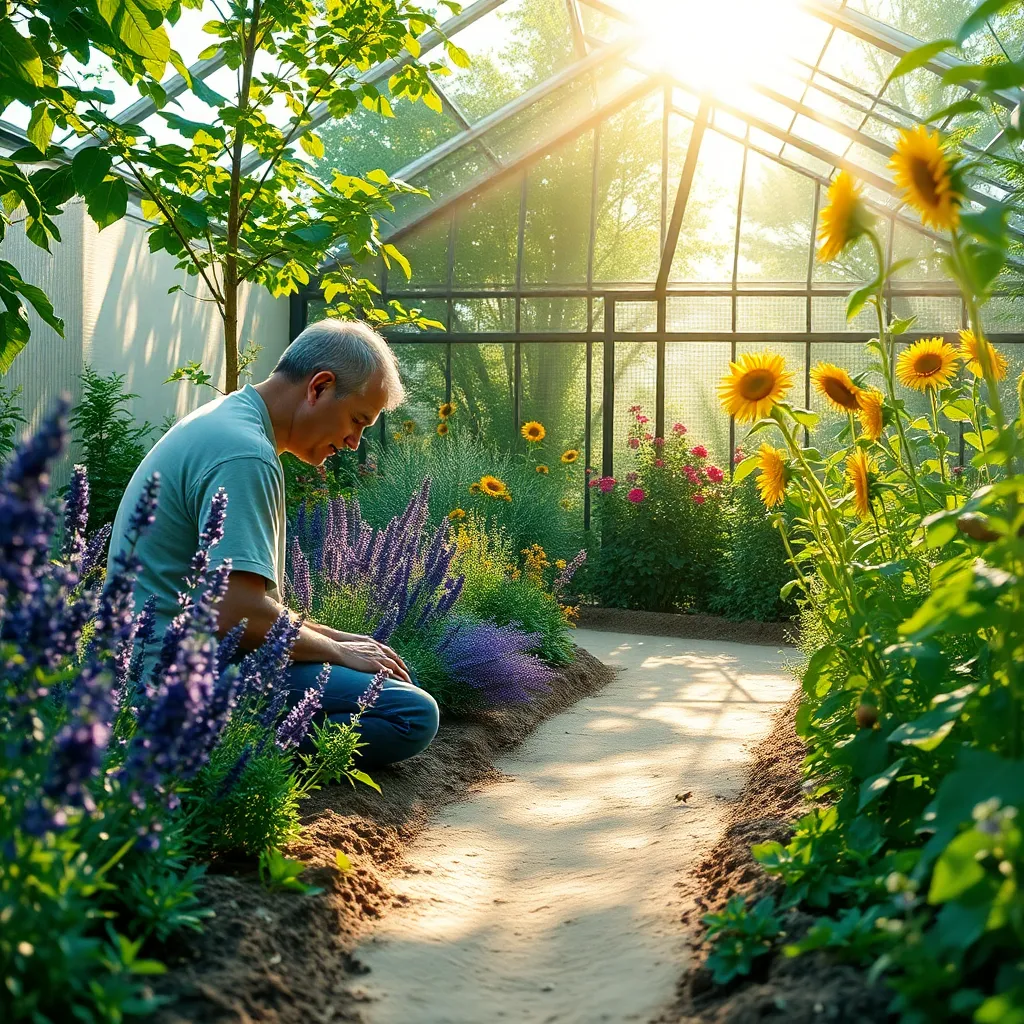
To ensure your bees thrive, selecting the perfect location for your beehive is crucial. Begin by finding a spot that receives ample sunlight, as bees are more active in warmer conditions.
Wind protection is another important factor when placing your beehive. You can achieve this by situating the hive near a hedge or using a windbreak to shield it from strong gusts.
Access to a nearby water source is essential since bees need water for cooling the hive and diluting honey. A shallow birdbath or small pond can provide a consistent water supply for your bees.
Avoid placing the hive in low-lying areas where cold air can settle. Instead, opt for a slightly elevated spot to promote good air circulation and prevent moisture buildup.
Consider the hive’s proximity to your home and neighbors, ensuring a safe distance to minimize disturbances. This thoughtful placement can lead to a harmonious coexistence with your buzzing friends.
Gathering Essential Beekeeping Supplies
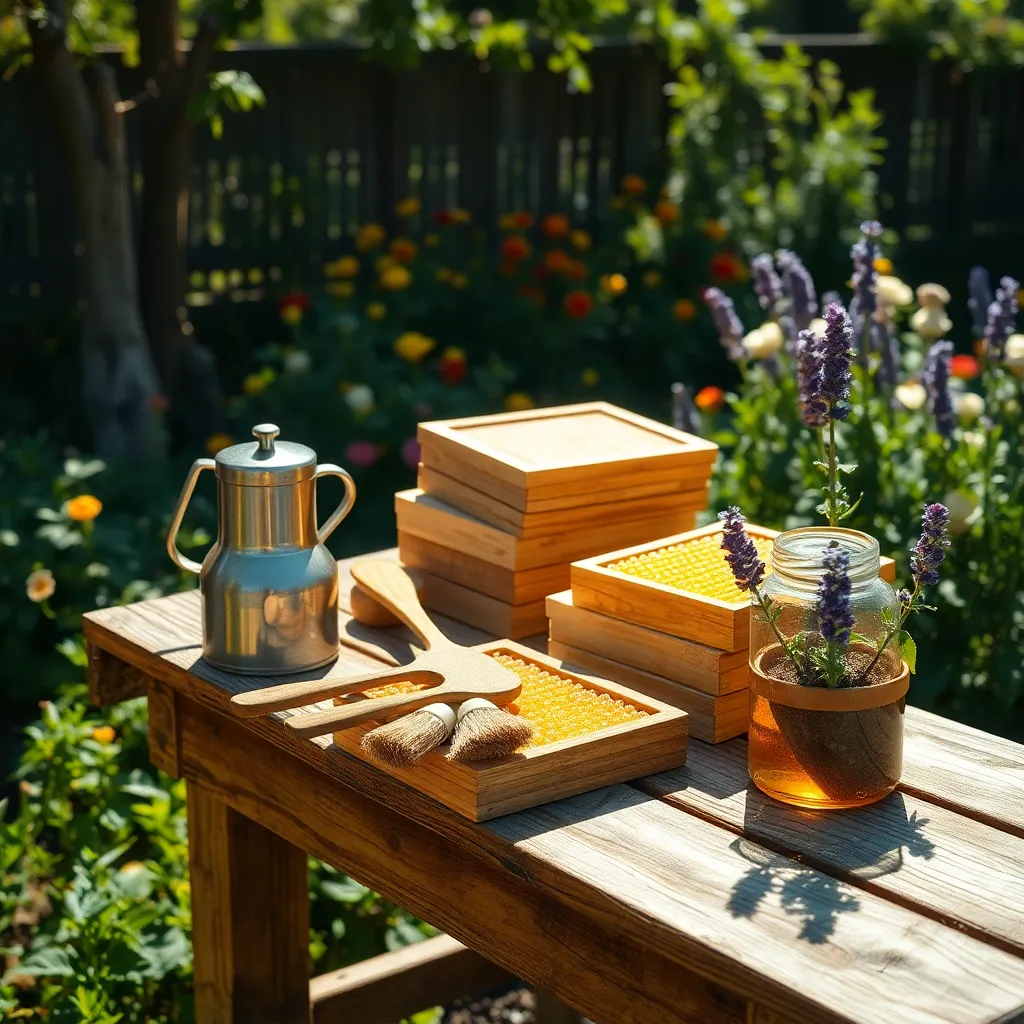
Before embarking on your backyard beekeeping adventure, it’s crucial to gather the right supplies to ensure your hive’s success. Start with a quality beekeeping suit that provides ample protection while allowing you to move freely as you inspect your bees.
Next, a reliable smoker is essential for calming the bees and making hive inspections smoother. Choose a smoker that is easy to light and produces cool smoke, which is less likely to harm the bees.
Investing in a sturdy hive tool is also important, as it will help you manage the frames and other components within the hive. Look for one with a comfortable grip to make your beekeeping tasks as effortless as possible.
For beginners, consider purchasing a beekeeping starter kit that includes the basic tools and equipment needed to get started. These kits often come with an instruction manual, which can be incredibly helpful as you learn the ropes of hive management.
Understanding Bee Species Basics
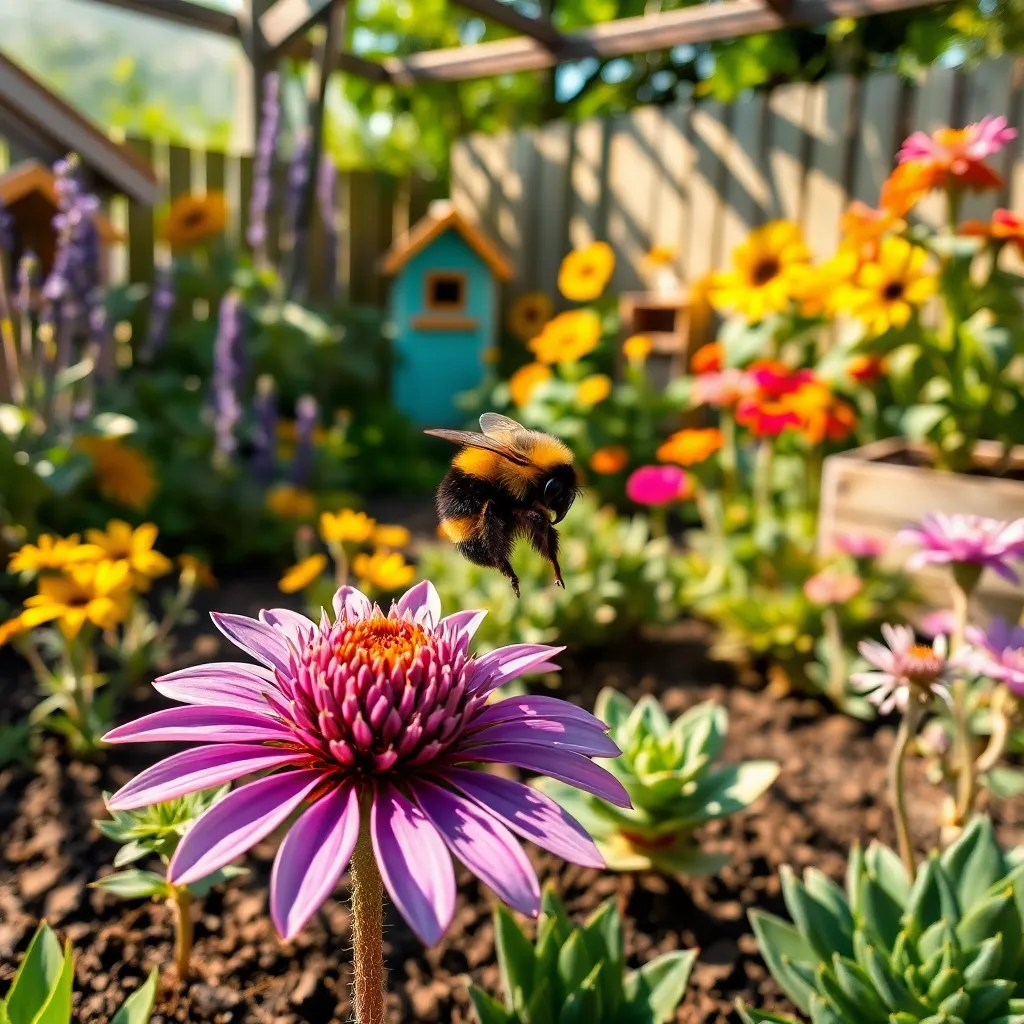
Understanding the basics of bee species can significantly enhance your beekeeping success. Different species have unique behaviors and habitat preferences, which influence how they interact with your garden.
One of the most common species for backyard beekeeping is the honeybee, known for its efficiency in pollination and honey production. Honeybees thrive in well-ventilated hives with access to diverse flowering plants.
Bumblebees, another important species, are excellent pollinators for your garden. They prefer cooler climates and can be attracted by planting native wildflowers and providing shallow water sources.
For those with more experience, consider exploring mason bees, which are solitary yet powerful pollinators. Mason bees require minimal maintenance and can be housed in small nesting blocks filled with natural materials like reeds or paper tubes.
Setting Up Your Beehive

To begin setting up your beehive, choose a location that receives plenty of sunlight and is sheltered from strong winds. It’s important to ensure that the site is easily accessible for regular maintenance and honey harvesting.
Next, prepare the area by clearing any debris and leveling the ground where the hive will be placed. Consider placing the hive on a stand to protect it from moisture and pests, ensuring it sits about 18 inches off the ground.
When assembling your hive, start with a simple Langstroth design, which is ideal for beginners due to its ease of use and availability. Ensure that you have all necessary components, such as the brood box, frames, and a cover, before you begin assembly.
It’s crucial to paint the exterior of the hive with weather-resistant paint to protect it from the elements. Avoid painting the interior surfaces, as this can harm the bees and disrupt their natural environment.
Maintaining Ideal Hive Conditions
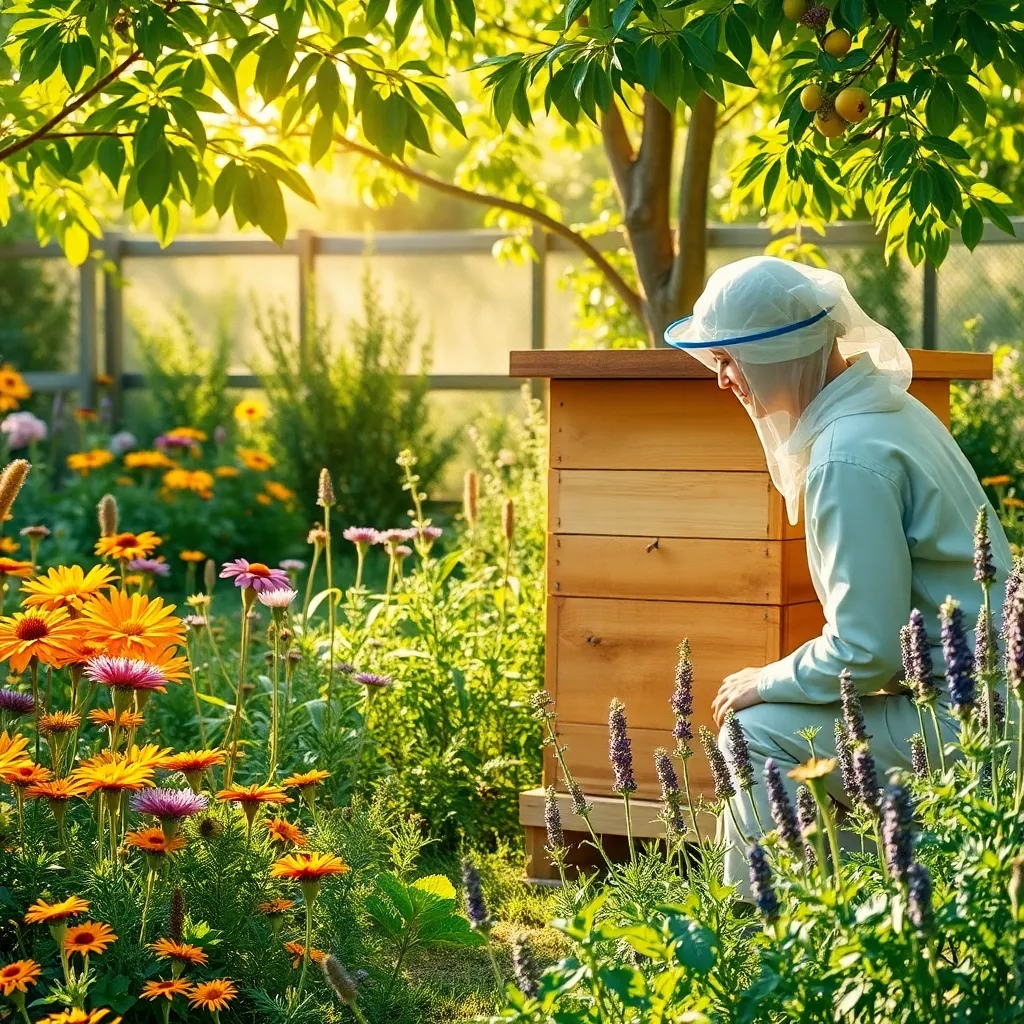
Creating the ideal conditions for your beehive is crucial for the health and productivity of your bees. Temperature control is an essential aspect of hive maintenance, as bees thrive in a climate that mimics a warm spring day. Aim to place your hive in a location that receives morning sun and afternoon shade to help regulate internal hive temperature naturally. Consider using shade cloths or planting shrubs nearby if your hive is overly exposed to direct sunlight.
Humidity levels within the hive should also be monitored, as excessive moisture can lead to mold and disease. Installing a ventilation system in your hive can help manage humidity, ensuring that fresh air circulates effectively. Some beekeepers use screened bottom boards to enhance airflow while keeping pests at bay. Regularly checking for condensation buildup is a good practice, particularly in the cooler months.
Be mindful of the hive’s insulation, particularly in regions with extreme temperatures. Adding an insulating layer during cold months can help maintain warmth, while a roof cover might be necessary in hot climates to prevent overheating. Some beekeepers use straw bales or foam boards to provide additional insulation. Regularly inspect your hive to ensure that insulation materials are not obstructing the bees’ movement or access to their food stores.
It’s important to keep your hive clean and free from pests and diseases. Conduct regular inspections to check for signs of mites or other harmful insects, and manage them with natural treatment options like essential oils or powdered sugar dusting. Keeping the hive entrance clear of debris will help maintain a healthy environment. A clean and well-maintained hive ensures that your bees can focus on pollination and honey production, leading to a thriving beekeeping experience.
Feeding Bees for Success
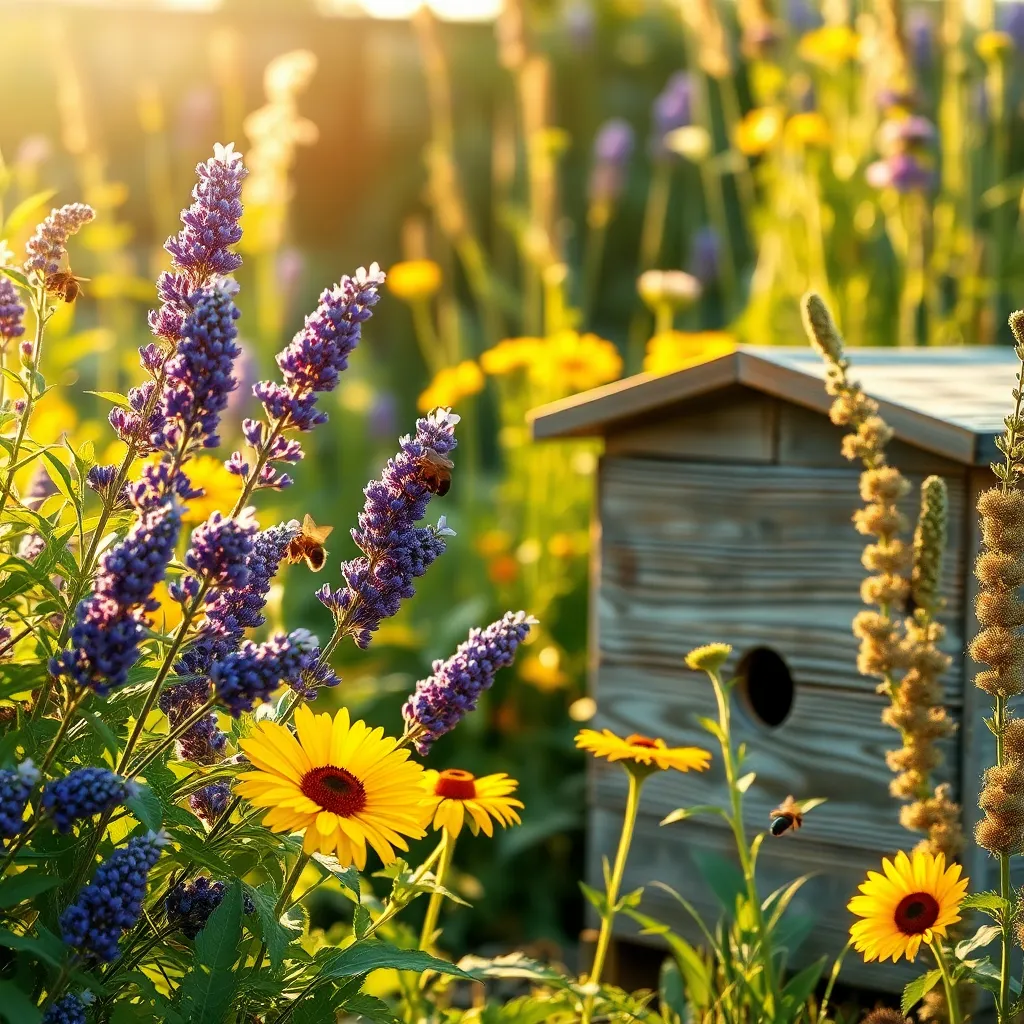
Bees play a crucial role in pollination, and providing them with a reliable food source is essential for their success. One effective way to support bees is by planting a variety of nectar-rich flowers that bloom at different times throughout the growing season.
Consider planting a mix of flowers such as clover, lavender, and bee balm, which are particularly attractive to bees. These plants not only provide sustenance but also enhance the beauty of your garden, making it a win-win for both the bees and your outdoor space.
It’s beneficial to incorporate native plants into your garden, as they are well-suited to local growing conditions and more likely to thrive with minimal care. Native plants often require less water and fertilizer, making them a sustainable choice for both the environment and your gardening routine.
For those with a bit more gardening experience, you might experiment with creating a bee-friendly herb garden. Herbs like rosemary, thyme, and sage are not only useful in the kitchen but also provide a great source of nectar for bees.
Be sure to plant in clusters to attract more bees, as they prefer to forage where there is an abundance of blooms. Regularly deadhead spent flowers to encourage continuous blooming and keep your garden looking vibrant.
Monitoring Hive Health Regularly
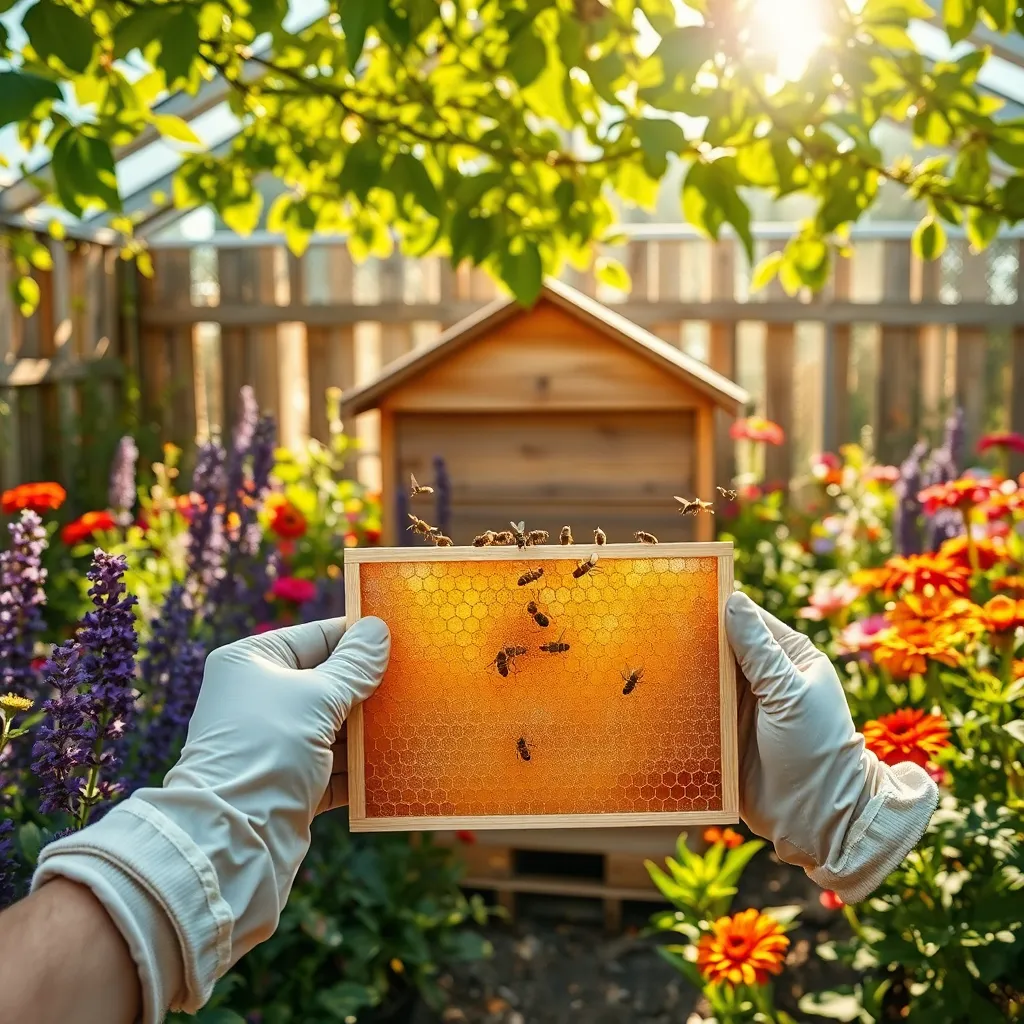
Regular monitoring of hive health is crucial to ensure your bees thrive and produce honey effectively. Start by conducting weekly inspections to check for signs of disease, pests, or other stressors that could impact hive productivity.
During inspections, look for symptoms like unusual odors or excessive bee deaths, which can indicate health issues. Additionally, check for proper brood patterns, ensuring the queen is laying eggs in a consistent and healthy manner.
It’s vital to assess the hive’s food stores, especially during seasons with limited nectar flow. If necessary, supplement their diet with sugar water or pollen patties to prevent starvation.
Advanced beekeepers might consider using a hive scale to monitor the hive’s weight, which can provide insights into nectar flow and hive activity. Additionally, consider installing a screened bottom board to help control varroa mite populations naturally.
Harvesting Honey Safely
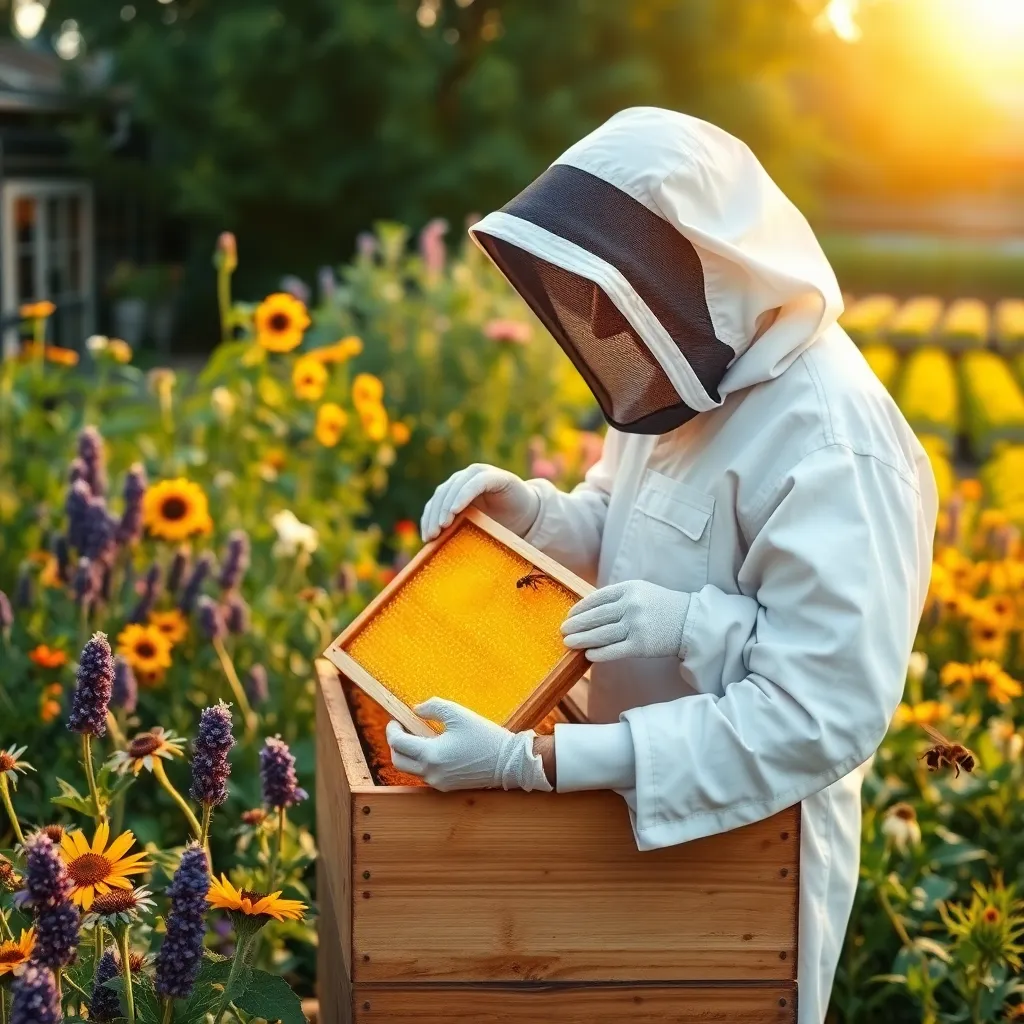
Harvesting honey safely begins with choosing the right time, typically late summer or early fall, when the honey is mature and capped. To ensure the quality and safety of your harvest, use a hive tool to gently pry open the frames without disturbing the bees excessively.
Wearing protective gear such as a bee suit and gloves is essential to prevent bee stings during the process. Approach the hive calmly and use a smoker to gently disperse the bees, which helps keep them relaxed and minimizes aggression.
Once the bees have been calmed, carefully remove the frames one at a time, ensuring they are at least 80% capped for optimal honey quality. For beginners, using a honey extractor can make the process more efficient, while experienced beekeepers might try the crush and strain method for smaller harvests.
After extracting the honey, it’s crucial to return the empty frames to the hive promptly. This allows bees to clean and reuse the wax, maintaining the hive’s productivity and health. Store the harvested honey in airtight jars in a cool, dark place to preserve its flavor and prevent crystallization.
Winterizing Your Beehive Efficiently
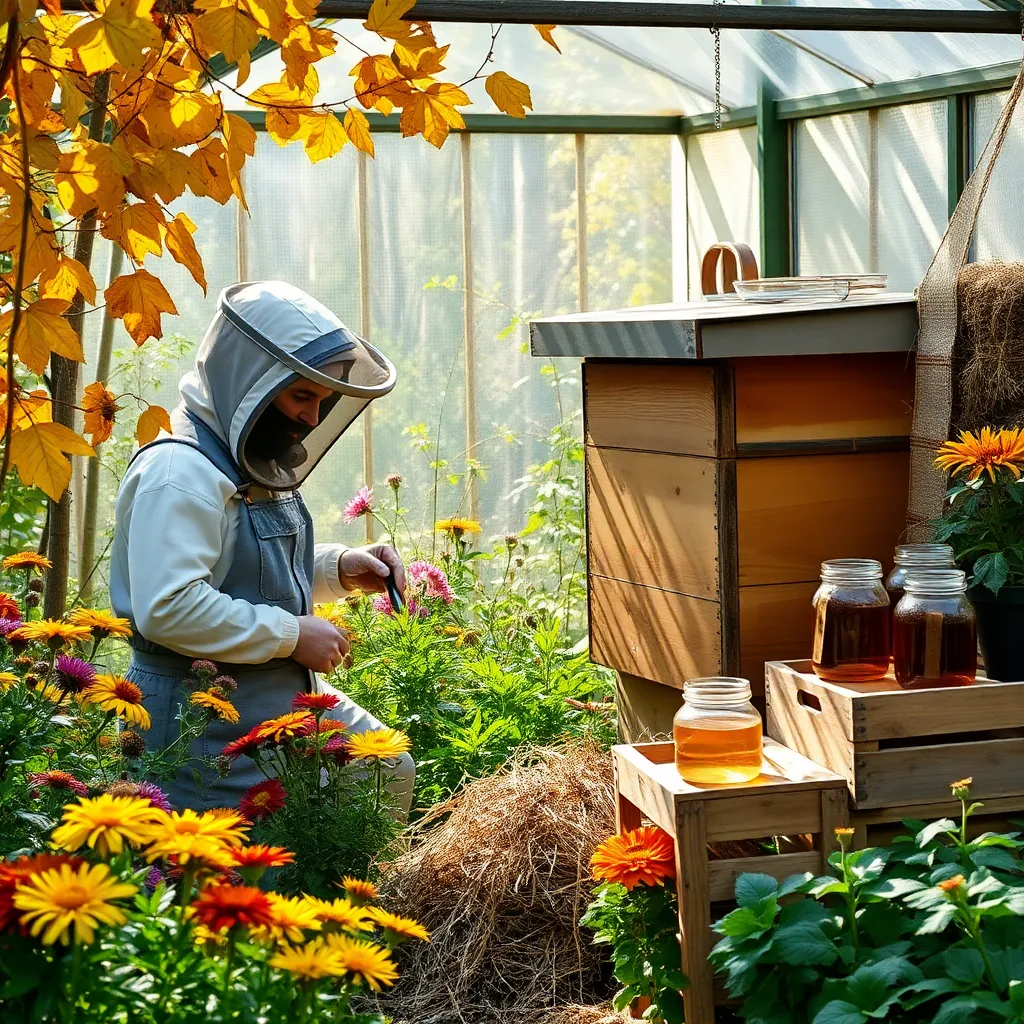
As the chilly months approach, it’s crucial to ensure your beehive is ready to withstand the winter. Begin by assessing the hive’s health; a strong, well-fed colony has a higher chance of surviving the cold season.
Check for adequate honey stores, as bees require around 60-90 pounds of honey to last through winter. If necessary, supplement with sugar syrup up until temperatures drop below 50°F, when it becomes too cold for bees to break cluster and feed.
Insulation is key to keeping your bees warm and conserving their energy. Consider wrapping your hive with a breathable material like tar paper or using a moisture board to absorb excess humidity, which can be more deadly than the cold itself.
Ensure the entrance reducer is in place to minimize drafts and protect against rodents seeking warmth inside the hive. A reduced entrance also helps the bees defend against any late-season invaders.
For advanced beekeepers, using a quilt box can provide additional insulation and moisture control. Fill the box with materials like wood shavings or straw to absorb moisture and keep temperatures stable inside the hive.
Finally, remember to tilt the hive slightly forward to prevent rainwater from accumulating inside. This simple step can help avoid moisture-related issues, ensuring a healthier environment for your bees.
Conclusion: Growing Success with These Plants
In this journey through ’10 Easy Backyard Beekeeping Basics,’ we’ve explored the essential relationship concepts that mirror the art of beekeeping: commitment to nurture, creating a harmonious environment, understanding unique roles, effective communication, teamwork, patience, embracing growth, adaptability, fostering community, and celebrating small victories. Just as bees thrive in a well-tended hive, relationships flourish when these principles are practiced mindfully.
Now, take an immediate step: identify one concept from this list that resonates most with your current relationship dynamic and commit to implementing it this week. Whether it’s improving communication or celebrating small victories, taking action today can sow seeds for a stronger connection tomorrow.
We invite you to bookmark this article as a valuable resource in your relationship toolkit. Let it serve as a reminder and a guide as you cultivate deeper connections. Remember, like the diligent bees, the effort you invest in your relationship will yield sweet rewards over time. Embrace this journey with optimism, knowing that every step you take is leading you toward lasting relationship success. Save this article, and let it be a beacon of guidance in your pursuit of nurturing meaningful bonds.

